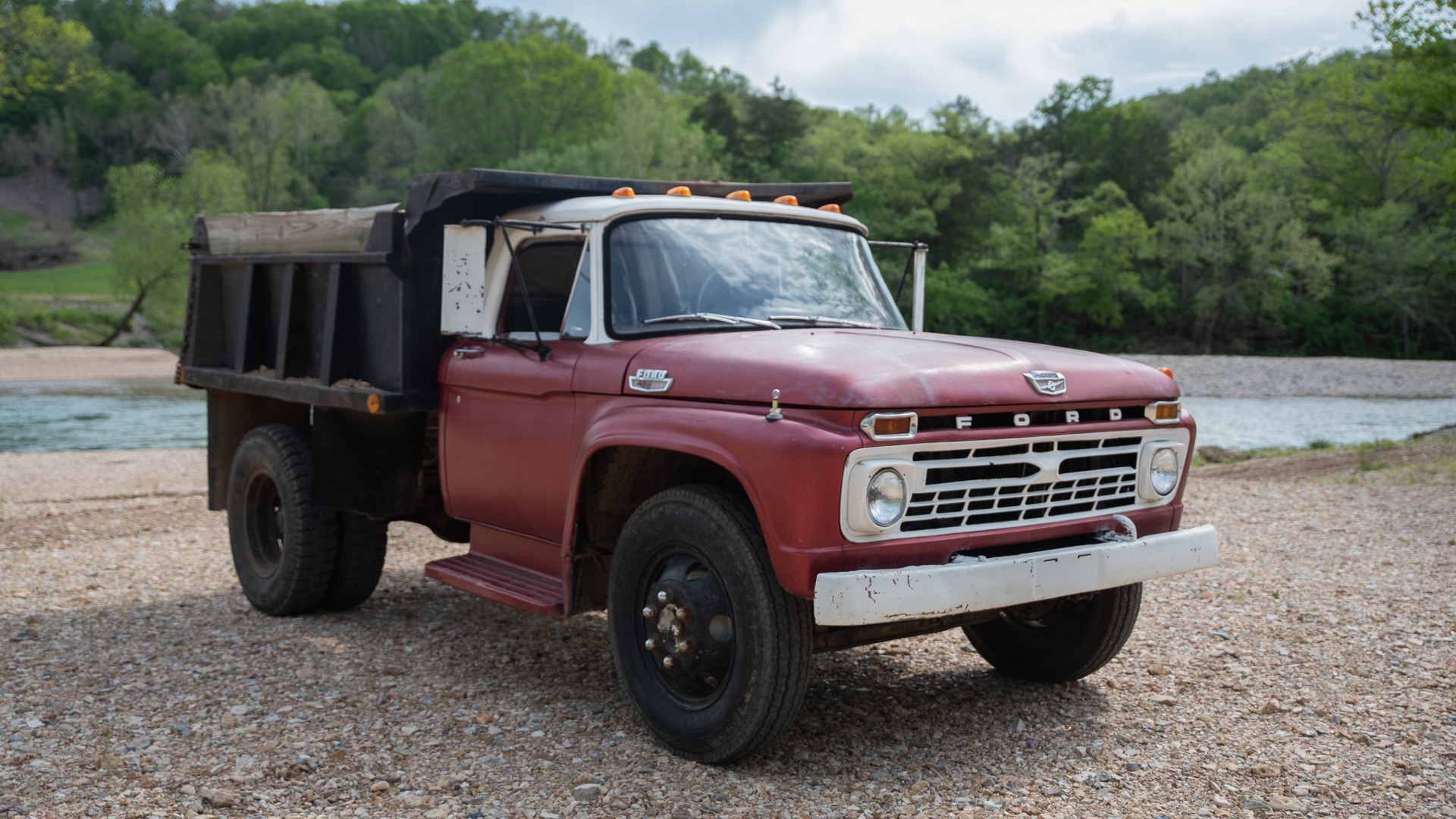

We may earn revenue from the products available on this page and participate in affiliate programs. Learn more ›
I did my 1966 Ford F600 dirty when I called it “a hodgepodge of Blue Oval trucks” a few weeks back. In reality, the 300-cubic-inch inline-six that I thought was a transplant actually came with the ton-and-a-half rig from the factory, turning my argument to mush. I’m okay with that, though, and I’m here to right that wrong, as well as explain a few other interesting nuggets of info I’ve uncovered about my beloved workhorse.

First off, the straight-six under the hood isn’t all that common. I’ve not been able to pin down an exact number of production units at this point, but according to my door plaque, it’s a heavy-duty 300 that came in a select few F600s at the time. Most who opted to upgrade from the standard 240-cubic-inch six went up to the 330 V8, though this came at the expense of fuel economy. Meanwhile, the heavy-duty 300 delivered both increased power and solid gas mileage, which is ideal when you’ve got to keep production high and costs low.
This special engine came with special parts too, most of which it still wears some 54 years (to the month!) after rolling off the production line in Kansas City, just three or so hours from my home. Based on what I know about the truck’s previous owners, it’s lived in this area for essentially its entire life.

Let’s look at the heavy-duty exhaust manifold, which has a slightly larger outlet size of 2.5 inches. They’re known to be stronger than those found in more ordinary one-ton and smaller trucks, and they can handle higher revs for extended periods of time—like when you’re hauling a load of gravel uphill, both ways. Hot-rodders also try to source these manifolds when building turbo setups as they can push a higher volume of air without blowing them to pieces.
Another component I suspect my F600 to sport is a forged steel crankshaft. From what I can tell, this part—labeled no. C6TE-G or C5TE-F—came equipped on all HD applications of the big-boy inline-six. I’m not 100 percent sure my truck has retained its stock crank over the years, though I’d have to pull the current one out to check and, as much as I love providing you all with neat info like that, I simply don’t have the time to tear it apart at this very moment.
According to the aforementioned door plaque, the engine is said to produce 150 net horsepower at a whopping 3,600 RPM. No torque figures are provided, and various sources across the internet claim wildly different numbers that range from 222 pound-feet to 260 pound-feet. Luckily, the folks at Ford’s archive were able to lend a hand here, providing me with not only these fantastic old-school power graphs but over 50 pages of info on 1966 model-year F-Series trucks.



As I continue to comb through this digital book of data, I’m learning more about what makes an F600 different than the other models, and what makes my particular ride unique from the rest. Without these, I never would’ve known the truck’s specified frame thickness, or that the heavy-duty 300 had plated copper-lead main bearings and connecting rod bearings. All these details made the commercial trucks that much more resilient and, truthfully, it’s great fun to nerd out on.



Back on-topic, the transmission is a New Process 435 four-speed, which was used in Ford trucks of all sizes for over 25 years. Unlike the engine, these are a dime a dozen, which will come in handy should I ever need to replace parts or the whole thing. This gearbox was also retooled to run in Dodge, GM, and even International trucks from the same era, though there were differences in the ratios for each application.
As for the rest of the running gear, the rear-end is an Eaton electric two-speed—which I knew already. However, it lists the high and low ranges as 5.83 and 8.11, respectively, which I did not know. Someone removed the wires and switch needed to toggle between the speeds, so I’m stuck in low gear from what I can tell. Still, it’s enough to drive on state highways at a reasonable speed. There’s nothing wrong with the slow lane in my eyes, especially if you come close to its listed max gross vehicle weight rating (GVWR) of 20,000 pounds.



The exterior has obviously been resprayed at some point in time, though it doesn’t stray too far from its original shade of Rangoon Red. The cabin still wears that same bright hue, actually, from its door panels to its mighty metal dashboard. Perhaps my favorite silly detail of the whole truck is the speedometer, that goes to “100.” Surely, kph would be more fitting in this case, but no—it’s miles per hour. Gotta respect that kind of optimism.
So alas, my ’66 is actually a solid piece of relatively original equipment—not some sort of mix-and-match like Johnny Cash’s Cadillac. The more I uncover about it, the more I love its character and do-anything attitude. After hauling over 60 loads of rock this spring, it deserves a little R&R. Don’t think it’s being put away for the summer, though—I’ve got cruising to do.

Caleb Jacobs is Deputy News Editor at The Drive. He buys weird things, like a ’66 Ford dump truck and a ’65 Chevy school bus. We continue to employ him, though we can’t seem to understand why. Send him a note: caleb@thedrive.com
